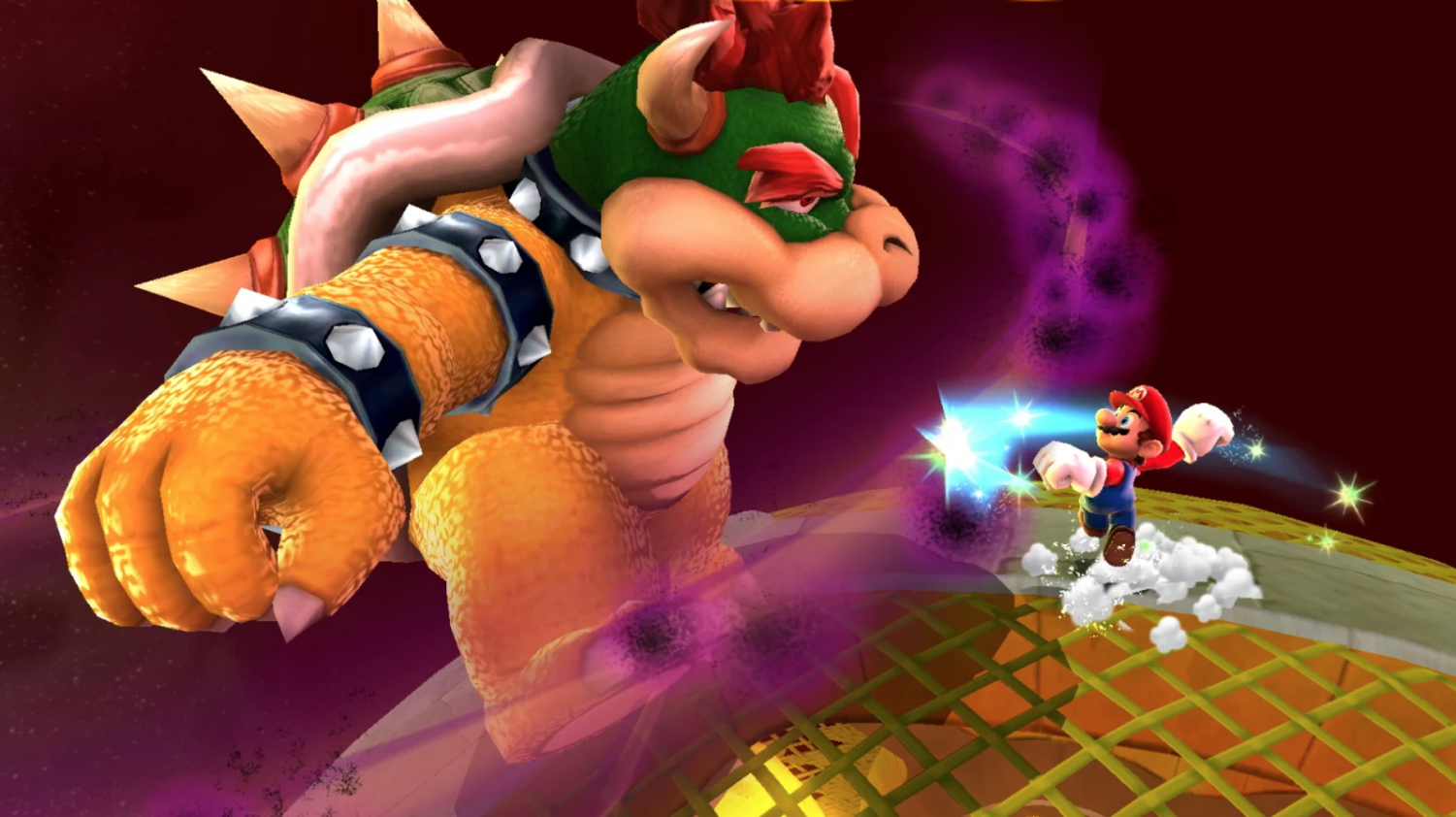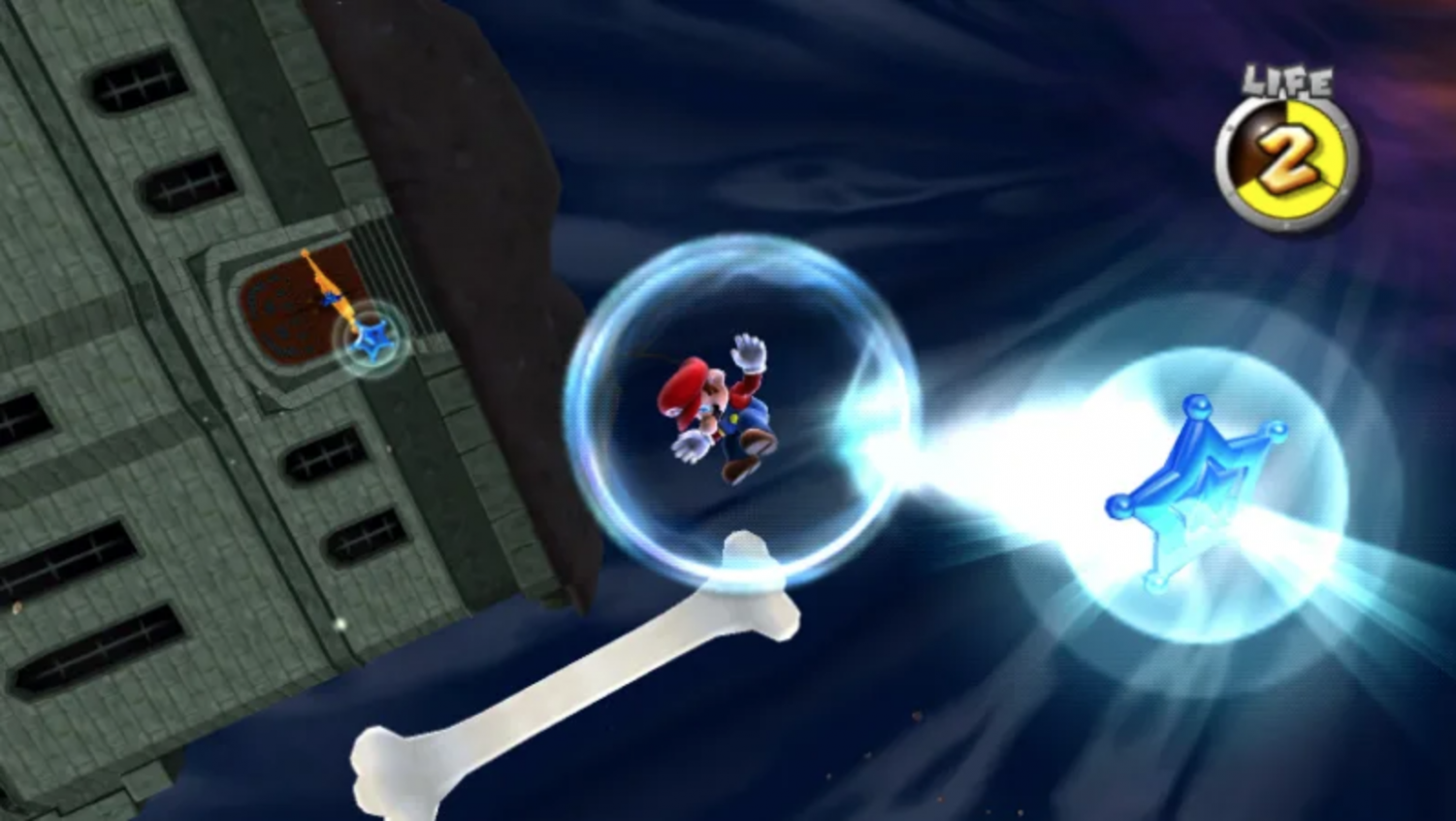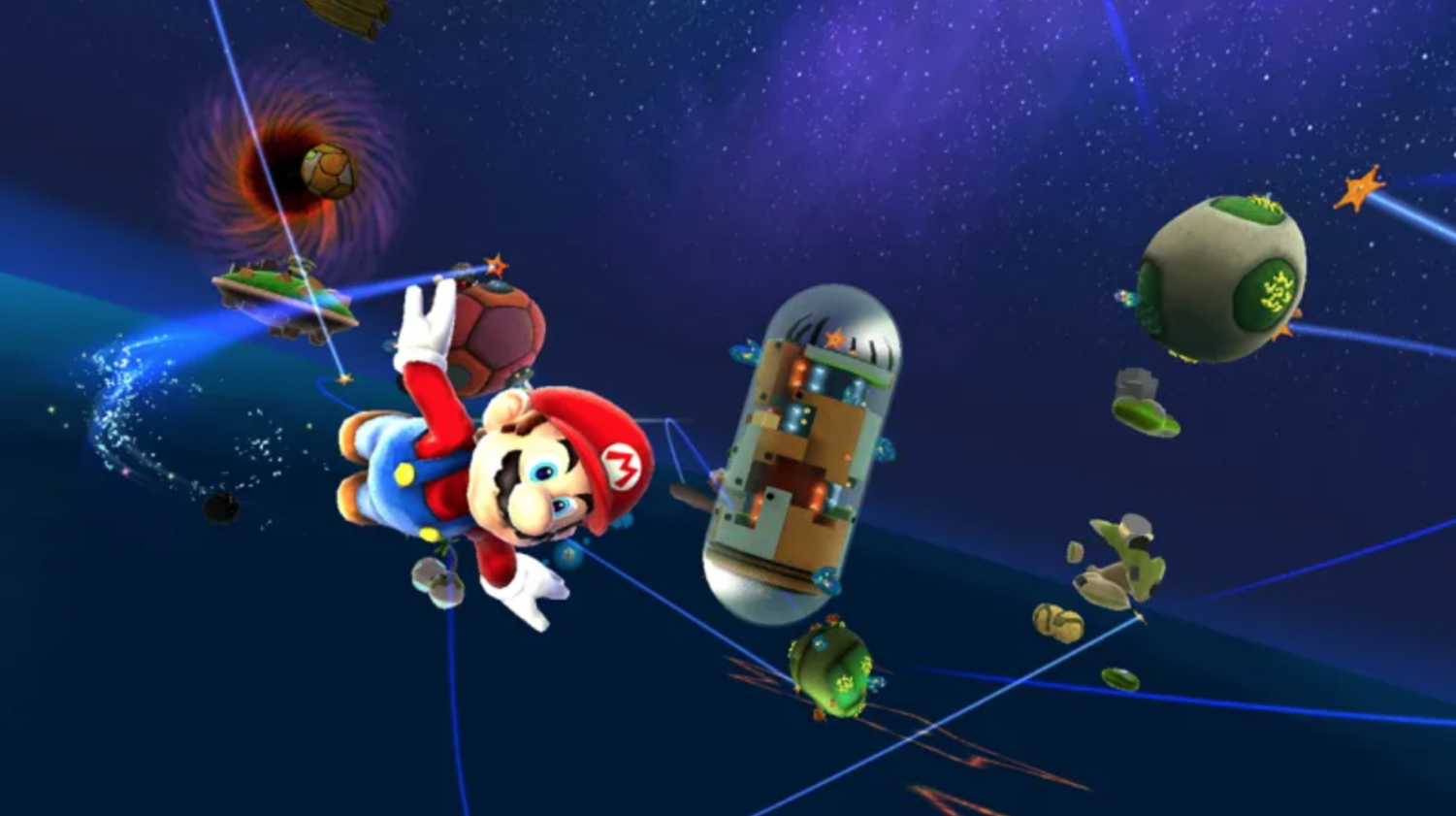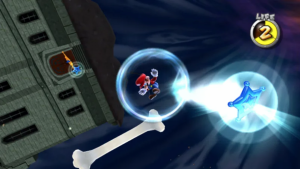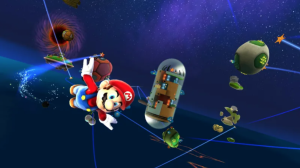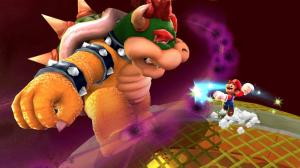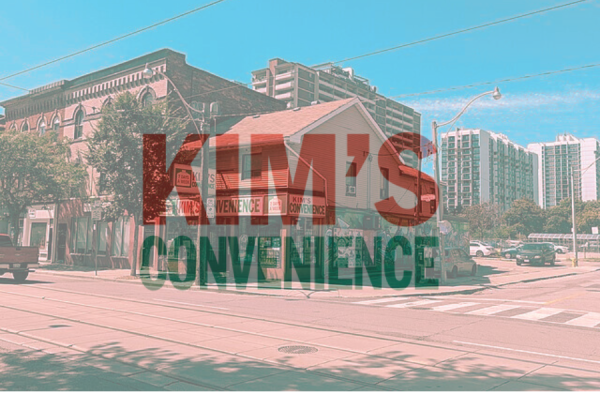‘Super Mario Galaxy’ Establishes its Place as Timeless Classic
Among one of the most acclaimed games of all time and one of the shining stars (no pun intended) of the Nintendo Wii’s game library, Super Mario Galaxy, released in 2007, was a huge leap forward for the iconic plumber. After Mario 3D All-Stars was released on the Nintendo Switch a couple of weeks ago, I had to pick it up and try Super Mario Galaxy for the first time. A few changes were implemented, such as a modification in the touch screen control serving as the replacement for the pointer of the Wii remote, the motion controls being remapped to buttons, and the game now running on an emulator. These were all welcome additions and they made the game easy to play on the go, as I did so. The best improvement of them all was the HD upscaling and the shift to a constant 60 frames per second, easily making the game look the best in the collection and cementing it as the definitive version of Super Mario Galaxy.
When the game starts up, a standard plot with Peach getting kidnapped by Bowser occurs, except the game shows it through some intense movie-like scenes, with orchestrated music booming in the background, a welcome change of pace from the happy-go lucky music I was so used to from previous games. Once the intro ends, you land on your first planet, and from there, the game teaches you the basics of control and the gravity mechanics. You see, in this game, you travel between not just levels on the same planet, but entire galaxies, which I think is a really creative concept. These levels consist almost entirely of obstacle courses that introduce something new at every level, and you have to quickly learn and adapt to these new level gimmicks to earn yourself a star. The game throws these challenges at you left and right, and I was always learning new techniques. However, there is one overarching mechanic, the game’s intense focus on gravity, and how it affects Mario as he travels between planetoids. When I first began walking around the oddly shaped planets, it took a little bit to adjust to how the controls worked, but once my brain adjusted, it became great fun to circle around the planets, look for coins to collect, and enemies to defeat.
However, the movement options in Super Mario Galaxy vary wildly from the previous games, as Mario feels a lot stiffer in this version to me. The dive move has been removed from this game, and Mario moves a lot slower, which is probably to accommodate the tight spaces and frequent pitfalls you have to jump over. Nevertheless, in this game, Mario has by far the best feeling attack: the spin attack. On the Wii, you had to shake the remote to pull it off, and on the Switch, you can just push the Y button. It feels immensely satisfying to hit enemies and knockback projectiles with it, and it’s my favorite attack of the 3D Mario games, being way more useful than the punch from Super Mario 64 in addition to being easier to aim than the jetpack from Super Mario Sunshine. You can also use it to extend your jump, working really well as a buffer if you miss a wall jump, or if a long jump won’t carry you far enough across a gap, and I used it quite a lot. Whenever I play later
games, they always feel empty without the Spin Attack, and it’s the perfect tool to get Mario where he needs to go.
Another new addition to this game is the new currency of Star Bits, the game’s pseudo-replacement for coins. You collect them by either pointing at the screen with your controller or using your finger on the touchscreen. They are extremely satisfying to collect for me, as they are used to gain extra lives and even unlock new galaxies or planets within levels. Meanwhile coins only add to your coin count, and give you some more health, making them boring in comparison. The game developers knew how good it feels to collect Star Bits, and I kid you not, they are sometimes placed to distract you during intense platforming challenges. They are just that fun to collect for me. Even though I died a bunch, it was always worth it if I had gathered a bunch of Star Bits. Interestingly, you collect them by spin attacking enemies, whereas coins are collected by jumping on them, meaning you need to put a little extra effort into collecting coins if you want to increase your life. This adds a tiny touch of strategy to otherwise bland Mario combat, which is very different from the standard jumping on enemies used in other games.
Once you make it through the first level, you can visit the Comet Observatory, a giant ship that connects you to all of the other galaxies. You can access more and more galaxies as you collect more Power Stars, which are collectibles you get by completing missions. The more you play, the more the game opens up to you, and since you don’t need every single star to complete the game, this means that you can pick and choose which missions you might want to do based on your personal preference. This adds to the extra little bit of open-world and goes at your own pace flair that previous 3D Mario games had as well, which helps connect it to the other games. In fact, part of the beauty of the game is that you can just straight-up skip Galaxies you aren’t too keen on, which definitely alleviated some frustration I had with tough and unforgiving missions. It’s nice to have that level of freedom to me, especially in the Mario series, which is well known to feature much more linear games. Options in games are always good, and Super Mario Galaxy does not disappoint.
Overall, I would say that Super Mario Galaxy is one of the better games I’ve played this year, and definitely in my top five Mario games. It has very few flaws, and the ones it does have can easily be skipped by simply not finishing certain galaxies, which isn’t usually possible in other platforming games. It has a certain raw beauty to its space setting and moments where you can just sit and enjoy the scenery. As soon as I started playing it, I was hooked, and I couldn’t put it down until I completed it. If you would like to get your hands on a copy, I would go with the version in Mario 3D All-Stars, which retails for $60, and comes with the previous 3D Mario games, so it’s a great deal. If you can’t get a Switch right now, which is pretty tough considering the pandemic and the exorbitant prices on eBay, the Wii version is great too. Most people have probably owned a Wii in their household at one point or another, and it is virtually identical to the Switch version. If this game was released tomorrow, I would not be able to tell. It is one of those timeless games; the ones where you could go back 10, 20, or even 50 years later, and would still hold up. It is one of the only games I’ve played that is close to perfection; and that means that I give Super Mario Galaxy 9.9 out of 10 stars. It is a truly exceptional masterpiece.
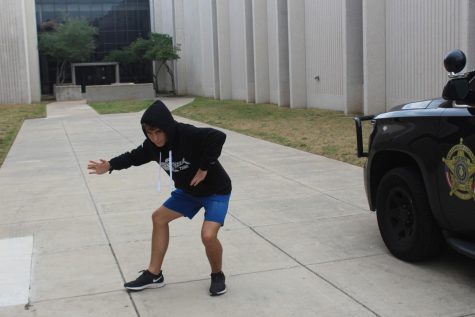
Class of 2023
I like to eat, sleep, inhale oxygen, and occasionally run and swim. I used to live in Shanghai, I own 9 pets, and I play a metric ton...

